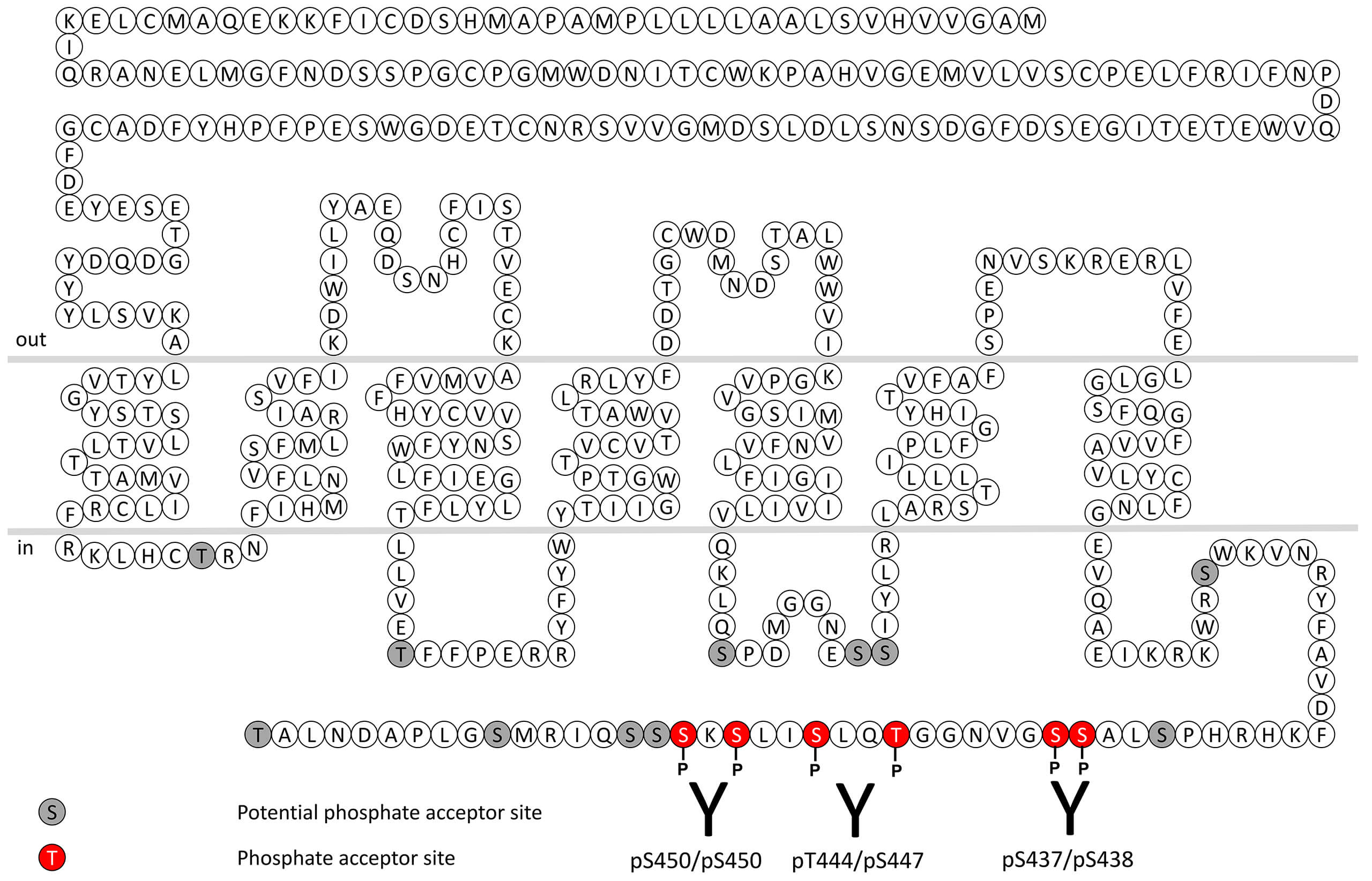PACAP Receptor 1 Phosphorylation Assays

The PAC1 receptor recognizes PACAP-27 and PACAP-38 with much higher potency than VIP. PAC1 is expressed predominantly in the CNS and in a number of peripheral tissues, most abundantly in the adrenal medulla. Unlike the VPAC1 and VPAC2 receptors, the PAC1 receptor has numerous splice variants. Studies on PAC1 receptor knockout mice point to a role for presynaptic PAC1-mediated signaling at the mossy fibre synapse in long-term potentiation (LTP) and hippocampus-dependent associative learning. The PAC1 receptor is also expressed in brain areas which have been implicated in the emotional control of behavior, such as the amygdala, bed nucleus of the stria terminalis (BNST), hypothalamus, locus coeruleus and periaqueductal grey. PAC1 signaling decreases food intake and promotes anorexic-like responses, which may be related to enhanced anxiety. The presence of PACAP in primary sensory neurones and the PAC1 receptor in the dorsal horn of the spinal cord suggested a role for the PAC1 receptor in pain responses. PAC1 receptor knockout mice displayed impaired nociceptive responses to chemical, thermal and mechanical stimuli and PACAP deficient mice also displayed abnormal pain responses. PAC1 receptor desensitization, β-arrestin recruitment and internalization are regulated by phosphorylation of carboxyl-terminal serine437/serine438 (pS437/pS438-PAC1), serine444/serine447 (pS444/pS447-PAC1) and serine450/serine452 (pS450/pS452-PAC1). This nomenclature refers to the human PAC1 receptor. This phosphorylation motif is conserved across species but corresponds to pS465/pS466-PAC1, pS472/pS475-PAC1 and pS478/pS480-PAC1 in mice and to pS492/pS493-PAC1, pS499/pS502-PAC1 and pS505/pS507-PAC1 in rats. For more information on PAC1 pharmacology please refer to the IUPHAR database. For further reading refer to:
Harmar AJ, Arimura A, Gozes I, Journot L, Laburthe M, Pisegna JR, Rawlings SR, Robberecht P, Said SI, Sreedharan SP, Wank SA, Waschek JA. International Union of Pharmacology. XVIII. Nomenclature of receptors for vasoactive intestinal peptide and pituitary adenylate cyclase-activating polypeptide. Pharmacol Rev. 1998 Jun;50(2):265-70. PMID: 9647867; PMCID: PMC6721840.
Vaudry D, Gonzalez BJ, Basille M, Yon L, Fournier A, Vaudry H. Pituitary adenylate cyclase-activating polypeptide and its receptors: from structure to functions. Pharmacol Rev. 2000 Jun;52(2):269-324. PMID: 10835102.
Harmar AJ, Fahrenkrug J, Gozes I, Laburthe M, May V, Pisegna JR, Vaudry D, Vaudry H, Waschek JA, Said SI. Pharmacology and functions of receptors for vasoactive intestinal peptide and pituitary adenylate cyclase-activating polypeptide: IUPHAR review 1. Br J Pharmacol. 2012 May;166(1):4-17. doi: 10.1111/j.1476-5381.2012.01871.x. PMID: 22289055; PMCID: PMC3415633.
Laburthe M, Couvineau A, Marie JC. VPAC receptors for VIP and PACAP. Recept Channels. 2002;8(3-4):137-53. PMID: 12529932.
Fahrenkrug J, Goetzl EJ, Gozes I, Harmar A, Laburthe M, May V, Pisegna JR, Said SI, Vaudry H, Vaudry D, Waschek JA. VIP and PACAP receptors (version 2019.4) in the IUPHAR/BPS Guide to Pharmacology Database. IUPHAR/BPS Guide to Pharmacology CITE. 2019; 2019(4).
 pT444/pS447-PAC1 Phosphorylation Assay Kit
pT444/pS447-PAC1 Phosphorylation Assay Kit  pS450/pS452-PAC1 Phosphorylation Assay Kit
pS450/pS452-PAC1 Phosphorylation Assay Kit 

